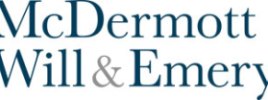Last fall, the Patent Trial and Appeal Board (PTAB or Board) interpreted the IPR joinder provision, 35 U.S.C. § 315(c), to require joinder requests by a non-party to an ongoing proceeding. (Target Corp. v. Destination Maternity Corp., IPR2014-00508 and IPR2014-00509.) Prior to that decision, the Board had interpreted § 315(c) to allow for issue joinder by the petitioner of the original proceeding (see, for example Microsoft v. Proxyconn, IPR2013- 00109). Of course, joinder was decided on a case-by-case basis, but had not previously been denied because the request was made by the petitioner of the original proceeding.
Target Corp. filed rehearing requests in both affected IPR proceedings in an effort to have the Board reconsider its interpretation of 35 U.S.C. § 315(c) with an expanded panel. Target’s arguments are quite clearly stated in its Motion for Rehearing. The Board granted Target’s rehearing request. In a 4:3 decision, the majority agreed that § 315(c) had been overly narrowly interpreted in the prior decision:
Turning now to the merits of the Request for Rehearing, the contention at the heart of Petitioner’s request for rehearing is that the denial of its Motion for Joinder was “based on an erroneously narrow interpretation of 35 U.S.C. § 315(c).” Paper 22, 1. We agree with Petitioner.
The majority read § 315(c)’s reference to “any person who properly files a petition under section 311” in conjunction with § 311′s requirement that the petition filer not be the patent owner, to broadly interpret § 315(c) to include any person except the patent owner. This interpretation is at odds with the dissent’s analysis, which reads § 315(c)’s reference to “may join as a party” to literally require a new party for joinder:
The statute under which Petitioner seeks relief provides:
(c) JOINDER.—If the Director institutes an inter partes review, the Director, in his or her discretion, may join as a party to that inter partes review any person who properly files a petition under section 311 that the Director, after receiving a preliminary response under section 313 or the expiration of the time for filing such a response, determines warrants the institution of an inter partes review under section 314.
35 U.S.C. § 315(c) (emphasis added). The statute does not refer to the joining of a petition or new patentability challenges presented therein. Rather, it refers to the joining of a petitioner (i.e., “any person who properly files a petition”). Id. Further, it refers to the joining of that petitioner “as a party to [the instituted] inter partes review.” Id. Because Target is already a party to the proceeding in IPR2013-00531, Target cannot be joinedto IPR2013-00531.
While the majority decision does align with panel decisions on joinder prior to Target, one must ask whether this issue is finally resolved by this expanded panel decision. For example, what happens if another panel does not follow this interpretation § 315(c)? Or suppose this decision is appealed; would the Federal Circuit reverse a Board decision on joinder as it relates to institution given its recent interpretation of 35 U.S.C. § 314(d) in In re Cuozzo Speed Technologies? (“We conclude that § 314(d) prohibits review of the decision to institute IPR even after a final decision. . . . Section 314(d) provides that the decision is both ‘nonappealable’ and ‘final,’ i.e., not subject to further review. 35 U.S.C. § 314(d).”) Would a Federal Circuit appeal have to be in the form of a petition for writ of mandamus? If so, how would that square with the mandamus decisions in In re Dominion Dealer Solutions, LLC, 749 F.3d 1379, 1381 (Fed. Cir. 2014)(mandamus relief not available to challenge the denial of a petition for IPR) and in In re Proctor & Gamble Co., 749 F.3d 1376, 1378–79 (Fed. Cir. 2014)(mandamus relief not available to provide immediate review of a decision to institute IPR)?









